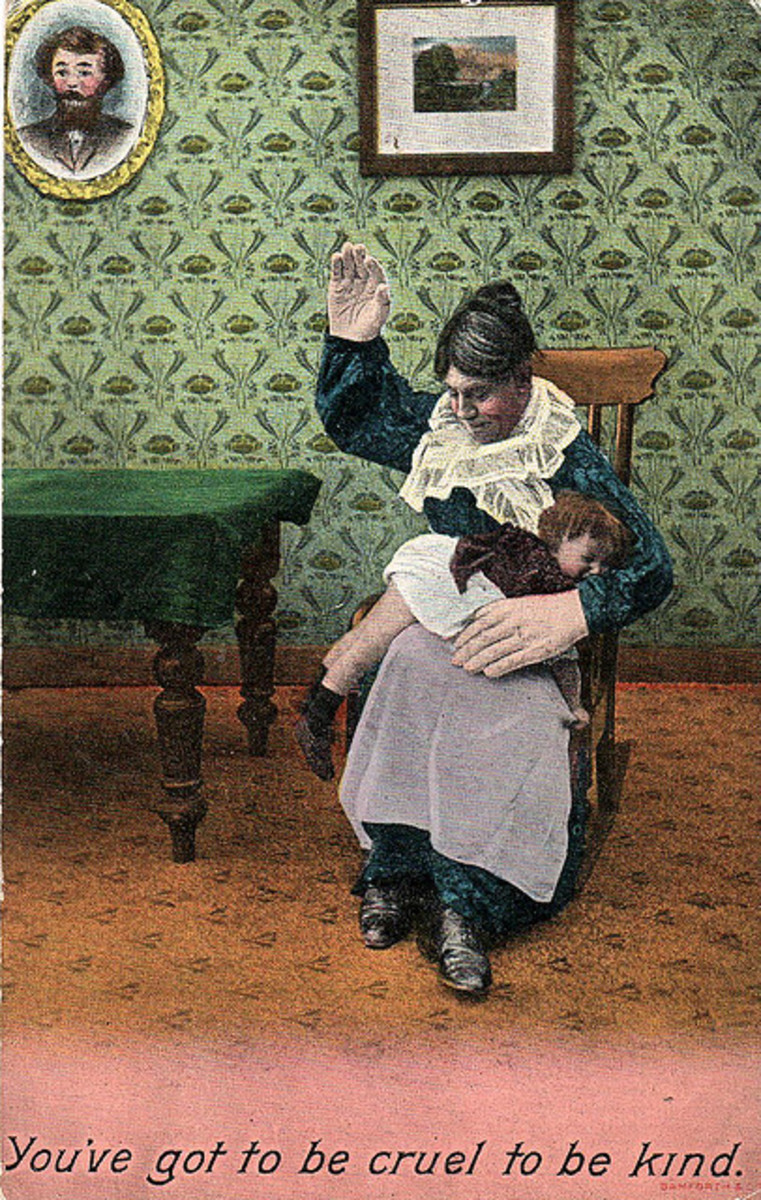WHAT HAPPENED TO RESPECT AND APPRECIATION, PART FIVE
INTRODUCTION
This is the fifth in a series of blogs addressing the topic, What Happened to Respect and Appreciation. These blogs correspond to six foster parent training classes that I am facilitating at San Bernardino Valley College on Tuesday and Friday mornings from 9 a. m. to Noon, starting January 11 and ending January 28, 2011. If you live nearby and want to attend the classes, email me.
Tuesday, January 11, 2011 What happened to Good Ol’ Authority?
Friday, January 14, 2011 What Are Our Needs For Respect and Appreciation About?
Tuesday, January 18 The Relationship Between Foster Parent and Foster Child .
Friday, January 21 Firmly Holding The Child Responsible and Accountable
Tuesday, January 25 So What About Discipline?
Friday, January 28 What Do I Want For Their Children?
PLEASE NOTE. Although the target population, so to speak, are foster parents, the wisdom here is for all of us who are parents and or caregivers of any kind.
In case you missed the previous classes or blogs, check out the following blogs
http://hubpages.com/hub/WHAT-HAPPENED-TO-RESPECT-AND-APPRECIATION-PART-ONE
http://hubpages.com/hub/WHAT-HAPPENED-TO-RESPECT-AND-APPRECIATION-PART-TWO
http://hubpages.com/hub/WHAT-HAPPENED-TO-RESPECT-AND-APPRECIATION-PART-THREE
http://hubpages.com/hub/WHAT-HAPPENED-TO-RESPECT-AND-APPRECIATION-PART-FOUR
http://hubpages.com/hub/HOW-OUR-BRAIN-WORKS
http://hubpages.com/hub/LOVE-BABY-LOVE
SO WHAT ABOUT DISCIPLINE?
It is interesting to me that anyone, at this stage of our series, would even ask this question. Yes, I know, I am the one asking the question! But I ask the question because I know some of you have had this question on your alleged minds (mine is alleged as well, so take no offense!) since the beginning of the series.
The question reminds me of a moment all the way back to about 1986. A church in Riverside, California, invited me to present a six-night series on Parenting with a specific focus on how to stop difficult behaviors without using corporal punishment. Yes, a good ol’ Southern Baptist Church group was interested in that topic. God Bless them!
In terms of giving information, I was done with my “lecturing” so to speak after the fourth evening. I told the group that we could spend the next two evenings talking about whatever they they wanted to discuss, and we could work on any specific examples they wanted to share with the group.
Do you remember the old Wendy’s commercial? The little ol’ lady who would say, “Where’s the beef?” You don’t remember? Man, am I OLD!
Well, after I told the church group that we could talk about whatever was on their minds, a gentleman in the back immediately raised his hand, just like the little ol’ lady in the commercial. “When are we going to talk about punishment?” “Where’s the punishment?....where’s the beef?” I couldn’t believe my ears. I thought we had been talking about punishment, as such. But, of course, instead of using the word, punishment, I talked about consequences and natural consequences and ways to deal with behavior you did not want to tolerate without using corporal punishment. Basically, he was saying that he still wanted to know how to wield the belt, how and when to give them a good swat on the butt!
I drove home that night laughing, realizing that no matter how hard I try to provide folks a different mind set, we all, for some reason or another, relate to punishment as the ultimate methodology in changing behavior, and want to know how! We have come some distance in that now we talk discipline, but the problem is not shifting from punishment to discipline. The problem is we have yet to shift our mind set. We still think in terms of pain, giving them something that hurts, well not just hurts, but really hurts.
In my own mind, if you have followed these four series of classes or blogs, you already have all the information you need to respond to any behavior that comes your way, and you will not even have to continue thinking in terms of discipline, positive or negative, let alone punishment.
But I know, some of you are still scratching your heads, still thinking back to your experience in boot camp, or still remembering the days you waited outside the classroom in the morning, vying with your buddies as you talked about who got the worst whoopin the night before. So yes, I will spend a class exploring the question, So what about discipline? Good! I can see that many of you are happy now!
LET’S DEFINE OUR TERMS
Let’s be sure we are all talking the same language. We use the word PUNISHMENT a lot. In traditional terms, to punish means to treat harshly or to inflict pain. Right?
And some of you work really hard to find the restriction or the take-away approach that will really really get to them, that will really really hurt. The more something hurts, for some strange reason, the more effective we think it will be in teaching them a lesson. Right?
WELL AS MANY OF YOU MAY HAVE ALREADY CONCLUDED THROUGH YOUR OWN EXPERIENCE, IT DOES NOT WORK THAT WAY.
The fact of the matter is, we, as adults, do not respond well to harsh or painful experiences, and neither does anyone else, including our pets. We typically learn nothing from these experiences except to AVOID. And we continue to avoid whatever it is our brain perceives as causing the pain. And so for a moment, you are saying, PRECISELY, and if I punish them harshly enough, they will AVOID doing that stupid thing again. But you know already from your own experience, they do not avoid the behavior that got them into trouble. They do avoid, but THEY AVOID YOU, THE DISHER OUTER OF THE PUNISHMENT, THE PUNISHER and sometimes they avoid you by continuing with the same old behavior, but they just work harder at not getting caught. So yes, they avoid getting caught and thus avoid the punishment, but there is no behavior change. Or they avoid you, and the relationship between you then becomes distant and in some cases non existent. NOT GOOD, NOT EFFECTIVE. And then worse, they pass the whole process on to the next generation, and along with it, all the faulty thinking, all the broken relationships between parents and children.
Now, I do not consider myself a behaviorists, but I must say, the behavioral psychologists, especially some of the old timers, going back to the 1930's and 1940's, folks like B. F. Skinner, gave us some really really important information about human behavior and animal behavior in general. We are animals, you know! Women think men are animals, but the fact is, we are all animals!
So, in behavioral terms, if you had a discussion with B. F. Skinner, he would tell you that a punishment is anything that in fact STOPS the behavior you want to stop. He would also tell you that pain NEVER stops or changes behavior. So for a punishment to work, there can be no pain involved.
Pain is often referred to as an adversive stimuli and sometimes has the effect of being a negative reinforcer. Notice the term reinforcer. Pain unfortunately does not reinforce or increase the behavior you want to see more of, but it reinforces avoidance behavior. It does not reinforce behavior change, but avoidance. And unfortunately avoidance behaviors stay with us long long long after the event that triggered the avoidance behavior in the first place. Thus we have issues around anxiety and phobic responses. Issues that have their origin in some event that occurred so long ago we may not even have conscious memory of it. But our muscles and our entire body remembers it well. The memory is stored as an emotional memory. It is stored in the amygdala, and unfortunately, we have no conscious acces to the amygdala. So we are, in effects, “victims” to these memories. There is a way to heal these memories, but that is a whole other topic. But you can check out some of my previous blogs on issues like PTSD. The bottom line is these long standing avoidant responses leave us almost incapable of participating in activities in which we dearly and desperately want to participate. One of those activities might be being a good parent.
So I am in a car accident. I don’t correct my bad driving habits. I just won’t get in a car period! I get shot robbing a seven eleven, so I won’t even go into a seven eleven to buy milk, but I start robbing Circle K’s! I know that is a ridiculous example, but I want you to understand how avoidance behaviors work, and how inflicting pain does not work as a “punishment” when we are talking behavior change. Haven’t you heard yourself say, “I could beat him till he was blue in the face and he would still go out and do it again.” That’s not telling you the person is crazy or stupid, it is telling you that you are stupid! (Oh come on, laugh!) The beating doesn’t work the way you think it should. You have a mistaken notion about how pain works or how punishment works, the same way we thought for thousand of years that the world was flat.
Let’s take a look at another situation. You are a woman and looking back, you see your relationship with Mom was painful as can be. So you made a pact with yourself that you would have a different relationship with your daughter. And you are so sad and distraught that no matter how you hard you try, you can’t pull it off, you don’t seem to be able to make the relationship with your daughter work. In fact, you avoid having a close relationship with your daughter. Unbeknownst to you, you avoid the relationship because it triggers too much pain from your relationship with your Mom. See how that works? And how pain works? Not good!
HOW IT WORKS
So my main goal today is to provide you with a framework for discipline. For example, you could watch someone bowl, and it looks as simple as rolling a ball down the middle of the bowling lane to knock over the pins. And there is a reality that no matter how skilled you might be, there is a certain element of luck or chance. But nevertheless, there is a lot of information about how to throw or roll the bowling ball. There is a lot of information about aiming, about hitting the pins at a certain point. I mean a good bowler is not going to rely on luck, but on his knowledge of how it all works.
So too, I want you to have knowledge about how it all works, and just like in bowling, all your knowledge is not a guarantee of one hundred percent success, but your knowledge and your practice do guarantee a high rate of success as a parent or foster parent or caregiver.
So try to remember what we have said so far in this series. There is no place in our society today where we tolerate people lording it over us. We work at standing up for ourselves and we teach our kids to do the same. So traditional forms of punishment or even traditional forms of discipline are going to be INeffective given our social and political context.
QUESTIONS TO ASK MYSELF
Just like the bowler, there are certain questions you want to continually ask yourself when you are thinking discipline or punishment.
*So is what I am thinking about doing, the consequences or restriction I am about to dish out, what is it going to do to my relationship with the child? Is it going to enhance the relationship or tear it down or wound it?
*Am I trying to come up with something that is going to really really hurt? Or am I trying to come up with something that will bring about behavior change? What is my bottom line goal? Satisfaction that I found something that really bothers them, or that they learn new behavior?
*Is what I am thinking about doing, going to teach the child self control? Or is it simply going to make the child comply as long as I am lording it over them? And once left to his or her own devices, the child will revert back to the old behavior.
*Am I giving consequences that last for several days, weeks, months, when a day consequence will be just as effective? For both me and the child? Think bankruptcy here, folks. Am I punishing my child or teen the way we punished Germany after the first world war (I am serious! Learn your history!)? Did I forget that for the children and teens who are always in trouble, it is most effective to start fresh each day? The better the chance of the process of shaping occurring, in other words, behavior change.
*Is what I am thinking about doing simply going to leave me feeling satisfied that they did not get away with their behavior for once, or again, is it going to teach them to be accountable and to be responsible? In the past, when I have dished out this kind of punishment or consequence, what were the results? Did I simply set myself up for the child eventually getting even with me, or was there actual behavior change?
*Am I attempting to take away something that they are really good at, something that gives them a sense of success or importance, am I about to tamper with an area of their life where they thrive? For example, am I about to tell the kid he cannot play baseball or be in the school play or perform in a concert or recital, or go to the jam session of the band he put together? Why would we pair a person’s successes with our attempts to motivate behavior change? To feel powerful? Or because we cannot go to our intelligence and discover more effective ways to motivate our children? There are more effective ways. There is such a thing as the premack principle where you pair high frequency behavior with low frequency behavior. The difference between the premack principle and taking away from an area where a child thrives is the premack principle does not take away anything.
*Am I attempting to take away an activity that is important in the child or teen’s developmental history? So I am going to threaten to take away the prom, going on a school field trip, going on a vacation with grandparents, playing in the all star games, and so on as a way to punish or motivate? Why do I feel so weak, so powerless, so insecure, that I would risk my child or teen missing out on an important activity or event, the missing of which will teach them nothing but what a hard nosed parent I am. What is the point of that?
I am not suggesting you become a softy, but not being a softy does not require you being a hard ass. We all hate it when our bosses pull this crap, and many of us leave the job and find work elsewhere. Why do we think it will work with our children? We go to dog obedience training and we are taught to be benevolent with our pets, not to hit them, not to shout at them, not to punish them. And for some reason, we buy into the program. So why do we think our children are so different from other animals or from ourselves? They are not.
You can go on and on all you want how the old fashioned ways worked so well. Well, be honest and take a look at just how successful or messed up your life is! Sorry about that, but that is the ultimate proof of the pudding. Right? How many pounds overweight are you? What about your alcohol consumption or prescription drug use? How did the old fashioned way help you with self control and self discipline? How tired are you each day. How depressed are you? How anxious are you? How’s yous self-confidence? Are you doing all that you dreamed of doing and if not, why not? How successful are you in your relationships? How did the old fashioned way help you in these areas of your life? The bottom line is it didn’t.
Again, remember that the word discipline means to learn. TO LEARN. What are my children actually learning from my style of parenting? Am I seeing positive behavior change? Not only what are they learning, but what am I teaching? Am I teaching them that they are precious individuals? Am I teaching them the importance of self control? Am I teaching them the importance of being accountable and responsible?
In my office, in the therapy room, I have a bookcase filled with very interesting rocks, trinkets, miniatures, metal sculptures, everything to dazzle the curiosity of little people. So when a child approaches the bookcase, I watch out of the corner of my eye. If the child reaches without permission to touch or pick up something, I stand up and move in between the child and the bookcase, and sometimes I shake my head, sometimes I say “No” (very softly), sometimes, I redirect the child back to sit on the couch with his parent(s) without saying a word. All of these interventions on my part STOP the behavior. So my interventions are technically speaking punishments even though there is absolutely no harshness or infliction of pain.
Now, if a child approaches the book case and asks to touch one of the rocks or trinkets, guess what I say? I say YES.
So before we think discipline, we need to first look at the big big big picture. Here is an important rule of thumb. WHATEVER I GIVE ENERGY TO PERSISTS. In other words, am I looking for the behavior I WANT TO SEE MORE OF? If I am, and I give energy to it, I will get even more of that behavior. Or am I only looking for the behavior I want to punish? If I am, and I give energy to it, I will get a lot more of that behavior.
Back in the first class, I shared a story of a 12 year old, and I will repeat it here.
So here is the story of a young 12 year old who was living with us for four months. Every morning, he refused to get out of bed. He whined and moaned like an injured animal. His mother did everything from trying to love him out of bed to hitting him and yelling at him to withdrawing from him. It was driving me insane to the point I wanted to use my drill instructor approach with him. You know, “Get your f.... ass out of bed, and I never want to hear any of this whining......” I did pull her aside and showed her exactly how to get him out of bed in the morning, but part of the plan was to stop sitting on the bed with him and to stop telling him “I love you.”
“Oh, I have to tell him I love him....no one told me when I was that age....”
I tried to convince her that she had twenty three hours and fifty nine other minutes each day to tell him she loved him. Just not then. It was mixing up apples and oranges! She could not get it and continued each morning with the insanity.
I wanted to kill them both (colloquially speaking!). But I contained myself and asked myself the question. What is the behavior I want to see more of? At first, I could not answer the question. Finally, I realized how simple the answer was. I wanted to see him up, dressed, and ready to catch the school bus BEFORE the school bus arrived! Once I realized that was the behavior I wanted to see more of, I started looking for it.
Yes, within three days of me getting clear what the behavior was, it showed up, right smack in front of my face. That is how it works. There he was, dressed, standing in front of the mirror, combing his hair, fifteen minutes prior to the school bus showing up. Wow! There it is.
So this is what I did. I walked to the bathroom door and said, “Hey, you have a good day today.” I said it with lots of gusto and a big smile. I said it with an underlying tone that non verbally said, “I know you are going to have a good day because you are such a cool kid. And I like you.”
I was shocked at his response. “You have a good day too.” Whoa! Where did that come from? I was expecting an F bomb! So I knew this was THE moment. So I said, “Hey, tomorrow morning, I don’t have to be at the office till later, so how about you and I hitting Starbucks before your bus gets here.”
Here is the kicker, folks. It was not a deal. It was not a contract. We went to Starbucks probably three times over the next six weeks and every day he was up and ready for school on his own. What made this happen was his experiencing someone wanting to have a relationship with him, someone giving him energy when he was doing well and not vice versa.
I know it SOUNDS simple and naive. You know what? It is simple, not easy, but simple. And it's not naive, but takes a lot of smarts. You have those smarts just like I do. And best of all, it works. WHAT YOU GIVE ENERGY TO, PERSISTS.
As we said, the word DISCIPLINE literally means to LEARN. So when I redirect the child in my office, when I say NO softly, I am practicing discipline for myself and providing the child with discipline. The child LEARNS there are limits within the office. When I see a child asking to touch, I say YES and the child learns there are limits and within those limits there are ways to still get what you want. In the story of the twelve year old, he learned that it was kind of cool to get up in the morning and act like a young adult and the relationship with his “uncle” that came with that behavior change was also cool, satisfying, valuable, precious, important.
NOW, IT IS YOUR TURN
So I invite you now to present those situations where you think you need to instill some kind of discipline, situations where you think punishment is warranted. We will cook book them on the board. With respect to discipline, we will follow Jane Nelson’s Positive Discipline approach. I know sometimes the word positive sounds so mamby pamby for some of you, but Jane gives us some very very powerful discipline tools.
With each situation or scenario you present, we will go back and look at the problem behavior in its bigger context. We will also look at the relationship between you and the child and explore what the function of the undesirable behavior is in the context of the relationship. We will also explore the metaphores of the behavior. We will look at where the child is developmentally not only chronologically but also emotionally and in the context of placement in your home.
After we have explored all of that, if it still necessary to come up with a discipline strategy, YOU BET WE WILL!
If you are attending class on line, leave your questions, your situations in the comment section. Be sure to check back to see my response to your question or situation.
THANKS SO MUCH FOR STAYING WITH ME.
Looking forward to working with you next Friday for the last class of the series. See you then.










